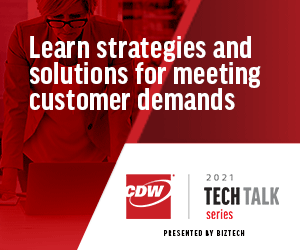“More and more successful retailers are leveraging data and consumer understanding to become precise in understanding their consumer, what brands to carry and what categories to expand or contract,” Hill says. “Going off gut instinct isn’t enough nowadays.”
Good data also requires good analysis, and that analysis should boil things down in significant ways.
“Having the expertise to match the data available with real and meaningful findings is the difference between succinct and meaningful insights or drowning in data,” says Patty Altman, NPD Group’s executive vice president of analytics.
Data collection comes with its own challenges, including consumer privacy and data security concerns. Christian Beckner, the National Retail Federation’s vice president of retail technology and cybersecurity, says that failing to account for these issues could create potential liability or regulatory problems for retailers. However, it is just one of many security considerations to keep in mind.
“Those are definitely a critical area of focus, but it’s not the sole focus from a cybersecurity standpoint,” he says.
Types of Retail Customer Data: Identity Data
Of the four basic kinds of retail customer data, identity data is perhaps the most foundational, encompassing information such as a person’s name, gender, contact information, email address and social media profiles.
WATCH: See how retailers are personalizing the shopping experience.
These data points help ensure that the people being contacted are current customers, and that they want to be contacted.
A major trend in recent years has been identity resolution, which describes the process of confirming a person’s identity. As the consumer data company Experian notes in a white paper, many companies are looking to technology to better target customers and to use their data to gather a more holistic view of their identities.
Types of Retail Customer Data: Descriptive Data
Descriptive data is in many ways a more in-depth form of identity data, distilling different types of actions into data points. This includes purchase patterns, website visits, email opens and usage rates. Perhaps the most important source for this kind of information in the retail space is point-of-sale data, Hill says.
“Point-of-sale data is the gold standard for market share tracking and should always be the first choice when looking to understand sales performance,” he says, adding that “one data source can’t answer all questions.”
Collecting descriptive data is a key element for modern persona-based marketing, which takes data points from throughout your customer base and turns them into a customer profile, from which you can build a business strategy.
Types of Retail Customer Data: Behavioral Data
Behavioral data ties together the threads from identity and descriptive data into more in-depth patterns that reflect actions. For example, if you know that a significant portion of your online shoppers are young adults, your marketing message might include a back-to-school sale.
REGISTER: Learn more about giving your retailer an edge with customers with the weekly CDW Tech Talk series. Click the banner below to register.















